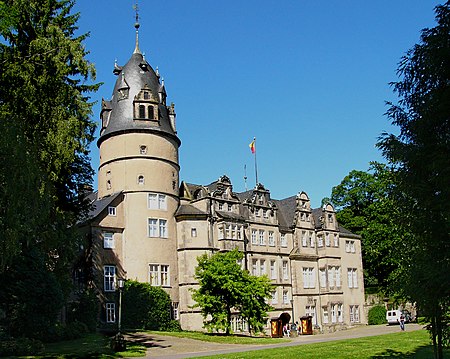Detmold
DetmoldLippePages including recorded pronunciationsPages with German IPAPrincipality of Lippe ... and 1 more
Towns in North Rhine-Westphalia

Detmold (German pronunciation: [ˈdɛtmɔlt] ) is a city in North Rhine-Westphalia, Germany, with a population of 73,969. It was the capital of the small Principality of Lippe from 1468 until 1918 and then of the Free State of Lippe until 1947. Today it is the administrative center of the district of Lippe and of the Regierungsbezirk Detmold. The Church of Lippe has its central administration located in Detmold. The Reformed Redeemer Church is the preaching venue of the state superintendent of the Lippe church.
Excerpt from the Wikipedia article Detmold (License: CC BY-SA 3.0, Authors, Images).Detmold
Richthofenstraße,
Geographical coordinates (GPS) Address Nearby Places Show on map
Geographical coordinates (GPS)
| Latitude | Longitude |
|---|---|
| N 51.937777777778 ° | E 8.8833333333333 ° |
Address
Richthofenstraße
Richthofenstraße
32756 , Detmold-Nord
North Rhine-Westphalia, Germany
Open on Google Maps









